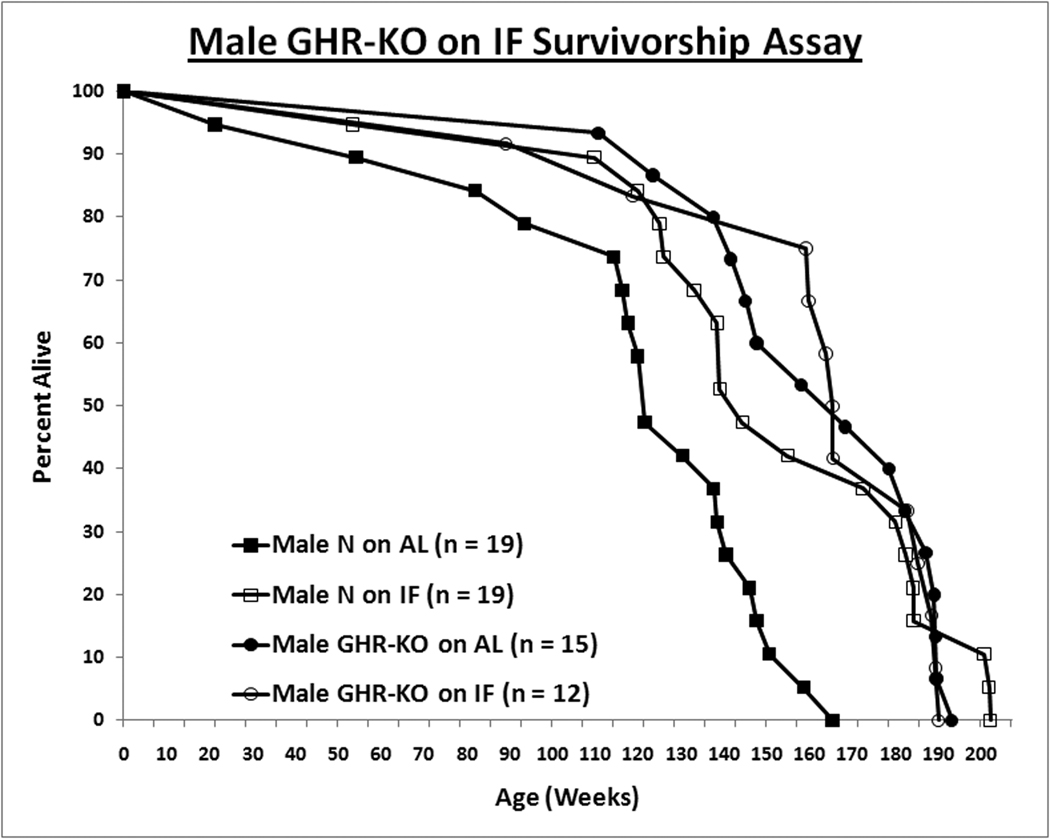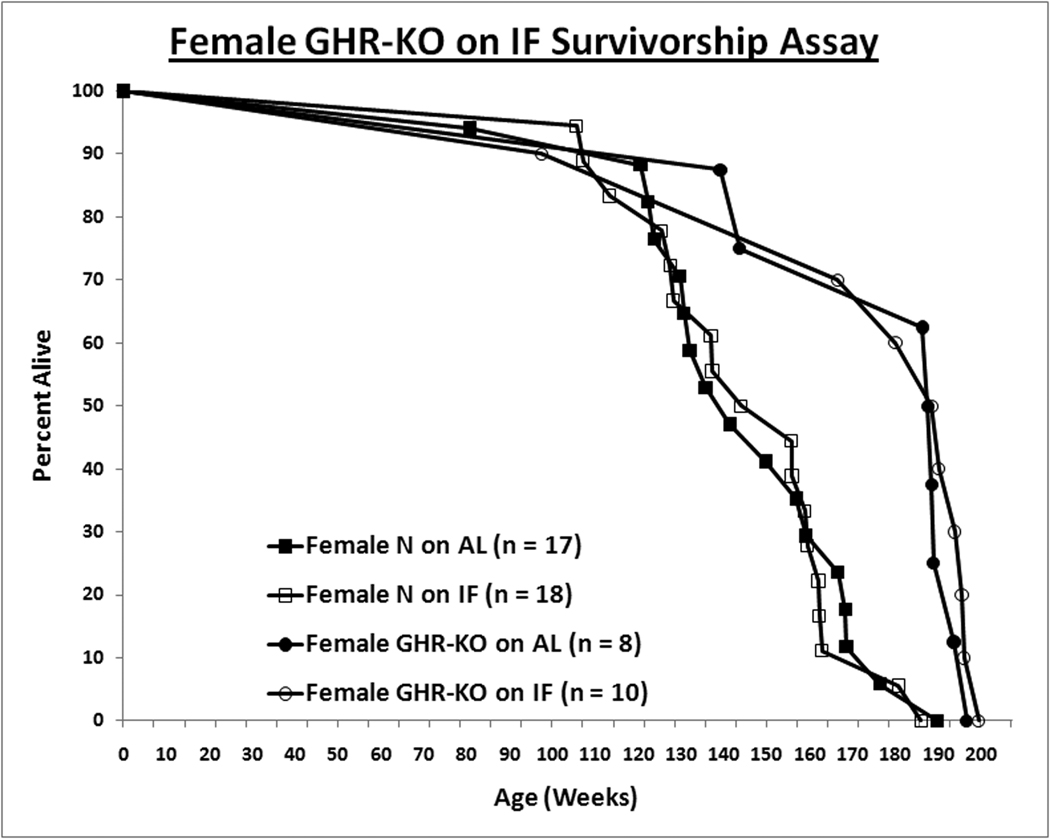Figure 2. Sexual Dimorphism of Effect of Intermittent Fasting (IF) on Survivorship.
For the survivorship assay, all animals were fed AL for the first 8–10 weeks of age. Henceforth, the mice were either fed AL every day (AL group) or every other day (IF group). Mice found either moribund or with a neoplasm approximately 10% of their total body volume were euthanized, and the date of euthanasia was recorded as the date of death. A. IF confers longevity to male littermates. B. For females, IF has no effect on either phenotype. Log-rank (Mantel-Cox) test analysis was utilized to compare the overall survivorship data with GraphPad Prism 5.01 (GraphPad Software Inc., La Jolla, CA); and maximal lifespan, of the 90th percentile of the appropriate control population, was analyzed with quantile regression exploiting an exact unconditional (Score Statistic) test (http://www.stat.ncsu.edu/exact/); for the latter, a binomial model was used, the hypothesis was two-sided, 99.9000% confidence interval assigned, and the test statistic employed was Fisher's Exact-Boschloo Test Statistic. Graphs were generated with Excel (Microsoft, Redmond, WA). All measures of central tendency are arithmetic means, and all depictions of variation (error bars) represent standard deviations. Mice physically lost from the study, euthanized due to senescence-independent matters, or included in a supplemental cohort in the survivorship assay account for the discrepancies in the sample sizes (within subgroup) between the body weight data and the survivorship data.


